Shuck Yeah: All About Oysters & How to Serve Them
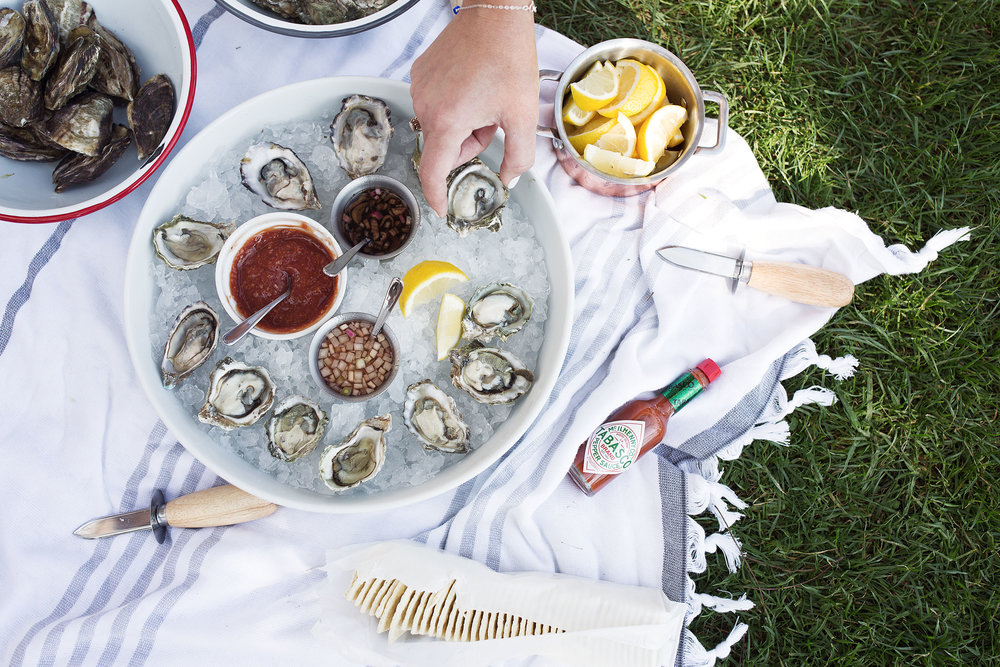
Once you get the hang of shucking oysters at home it, it’s fun and you feel accomplished. I have talked about what a picky eater I was growing up and I didn’t even start eating oysters until a few years ago. I was up in Portland, Oregon with my dad and my brother for a weekend trip and we went to an amazing seafood restaurant called Ringside. My brother – always the adventurous eater – and my dad had ordered an absurd amount of oysters and as I sat looking equal parts disgusted and intrigued, they convinced me to try one.
Shuck Yeah: All About Oysters & How to Serve Them
Table of contents


Oysters for dummies
I distinctly remember the first oyster I ever tried was a Kumamoto oyster. It’s a West coast oyster in a small shell with a deep cup and has a mild brininess and sweet flavor. I loved the combination of the brine and the creamy oyster. If you aren’t an oyster person then you can disregard this description as you’re probably grossed out. But I became obsessed with them. Now I’ll take any excuse to order a dozen oysters (or more) paired with a crisp glass of white wine. I have found that the discerning sushi lover is likely to enjoy the texture and flavors of oysters.
When oysters are best
The myth is that the best months for raw oysters are the months that end in the letter ‘r’ – meaning fall and winter months. The reason for this is that they are spawning during those other warmer months and are not as palatable. That rule can’t be applied as generally anymore. Many types of oysters have been engineered not to spawn so that they can be harvested all year round. The key is to look for the freshest oysters you can find – those will usually be the best. Some factors like size, texture, brine and seasonality (which are all impacted by the location they are sourced from) come down to personal preference.
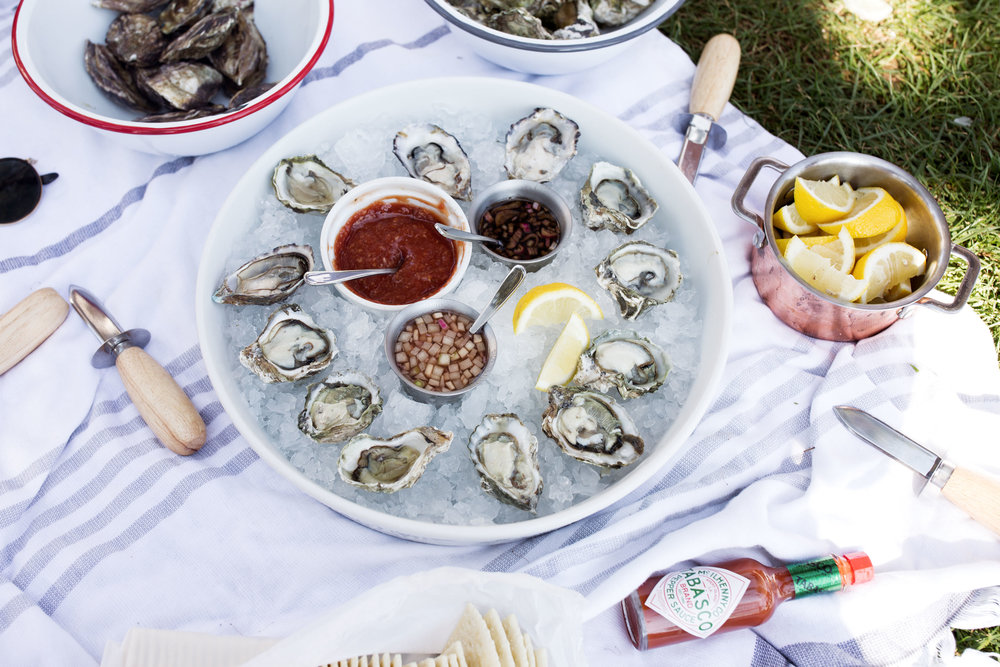
Species of Oysters
Here’s where we bring back the age-old East Coast vs. West coast debate.
There are actually five different species of fresh oysters: Pacific, Kumamoto, Eastern, European flat and Olympian – and all are very different. If you are new to oysters, then reading words won’t necessarily tell you what you like. It’s like wine, you have to experience the different flavors to learn what qualities you do and don’t like. So first go out and eat a bunch of different oysters (easiest homework ever). But before you do, here’s a little introduction to the varieties of oysters because not all are created equal.
Pacific Oysters
Pacific oysters are often larger with sharp, rigid shells. They have soft and sweet flavor often with hints of fruit flavor. They originated on the Pacific coast of Asia and now account for about 75% of all oyster production. Many of the Pacific oysters eaten in the US come from the west coast. Especially in bays like California’s Humboldt and Oregon’s Puget Sound.
Kumamoto Oysters
Kumamoto oysters originated in Japan and are small and creamy. They are great for beginners because of their mellow, familiar flavor. They don’t have much brine because the meat takes up the majority of the shell.
Eastern Oysters
Eastern oysters are large oysters with firm meat and a briny finish. They typically have a smoother and rounder shell than the Pacific oysters. These oysters pull their flavor from their environment and are native to America. They often come from the Chesapeake Bay or the Long Island Sound.
European Flat Oysters
European Flat oysters, also known as Belon oysters, are medium sized oysters with a round and shallow shell (hence ‘flat’ in the name). They have a notable metallic taste. This is because they are high in iodine, which leads them to be off-putting and they tend to be disliked by many. They are also hard to ship — they die if they are out of the water more than a few days.
Olympia Oysters
Olympia oysters are the last of the main five species of oysters. They are categorized by their small size and coppery, smoky taste. Because they aren’t the easiest to harvest or ship (even harder than the European Flat) they aren’t as popular as other oysters. They are so small that they hold little liquid and therefore dry out quickly. While they are small, they pack quite a flavor punch.

Buying tips for oysters
Since there are numerous types of oysters, Oysterater is a great site if you want to look up qualities of a specific type. Next time you order a dozen oysters at a raw bar don’t be afraid to ask questions or to try different varieties.
- While there are plenty of websites where you can order oysters online, or directly from oyster growers, I get mine from a local LA seafood store, Santa Monica Seafood. They always have a range of different oysters from all over and you can have them shucked and put on ice or you can just get a whole bunch and do it yourself!
- No matter where you buy them from, just remember it’s important to buy from a reputable source. It’s typically cheaper to shuck the oysters yourself and they will be fresher — it’s a win-win situation.
- When buying oysters remember that they are living until they are shucked so they will need to be tended to right up until that point. Keep them on ice until you plan to shuck them.
- Look for oysters that have their shell tightly closed and feel heavy for their size. If they are being served at a restaurant on the half shell (already shucked) a simple key to follow is if they don’t smell fresh i.e. like the sea, don’t eat them.
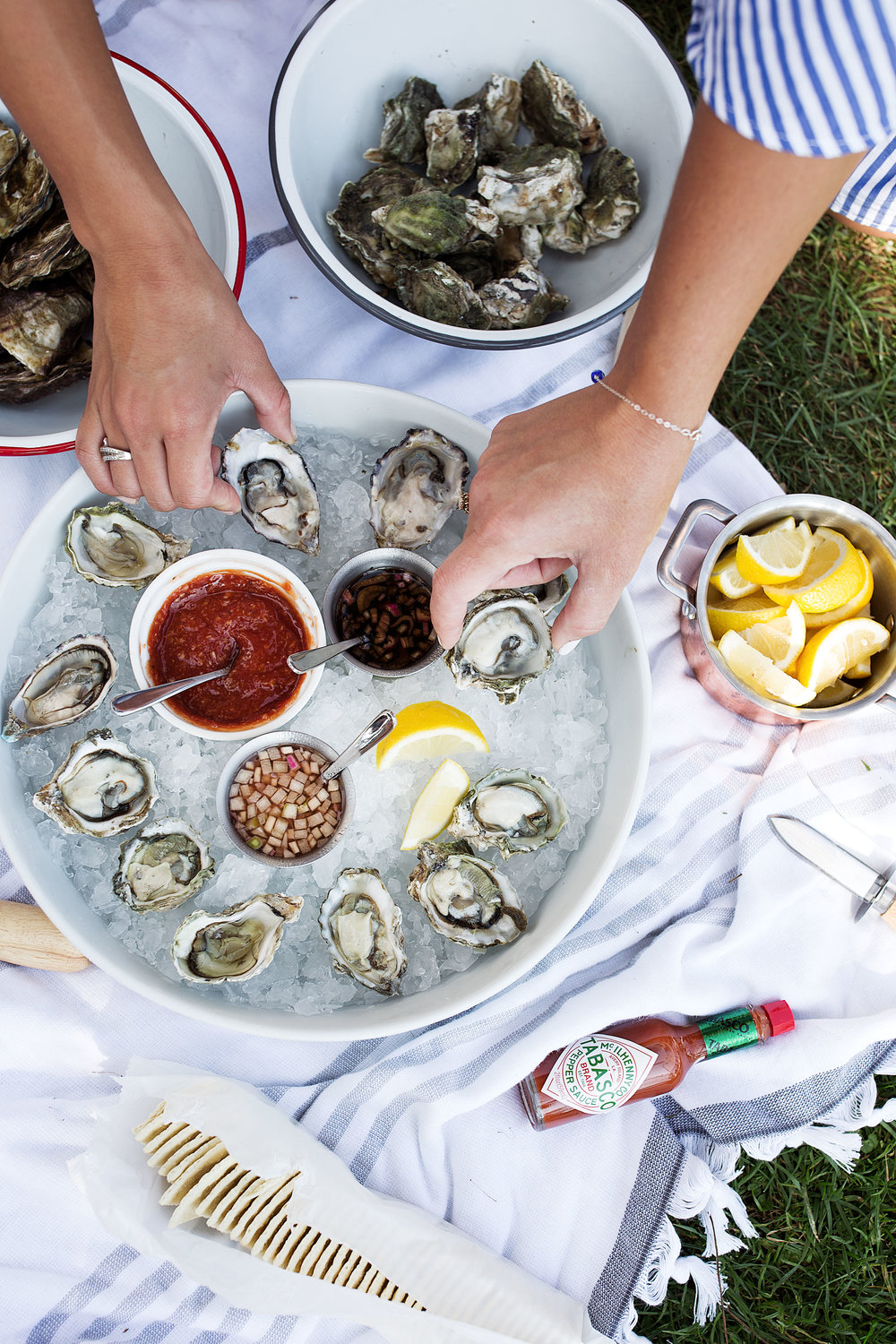
Let’s Shuck
Shucking an oyster isn’t intimidating if you learn to do it the right way. I bought an oyster knife specific for the task. They are short bladed, dull-pointed thick knives. The tip is just sharp enough to penetrate the shell and wedge open an oyster.
- Thoroughly scrub all the oysters prior shucking. You don’t want any of the grit or sand getting in the shell once it’s shucked.
- Get an oyster knife and towel. Do not try to use a normal kitchen knife to shuck oysters! I found out the hard way as I ended up with a broken knife and no oysters.
- Work the knife into the hinge. Before you shuck be sure to use a towel (or special mesh glove) to hold the oyster and then using the shucking knife in your dominant hand, work the blade into the hinge. This part will take some practice but look for a spot that you can get some leverage. Don’t shove the knife in – wiggle it around a bit until you find that spot so it pops open.
- Pry the oyster open. Once the knife is in place, twist and rotate the knife to pry the oyster open. Clean your knife, then sever the muscle that acts like a tie between the top and bottom shells and discard the top shell.
- Release the oyster from the shell. Without tipping the oyster (you will lose all the brine!) slide your knife under the oyster. This severs the muscle from the bottom cupped side of the shell. This ensures that it slides into your mouth when your tip it back.
Kumamoto oysters are the hardest to shuck because they have more misshapen shells and it can be difficult to find the hinge. They aren’t impossible but for those new to shucking it can be time consuming (and agitating).
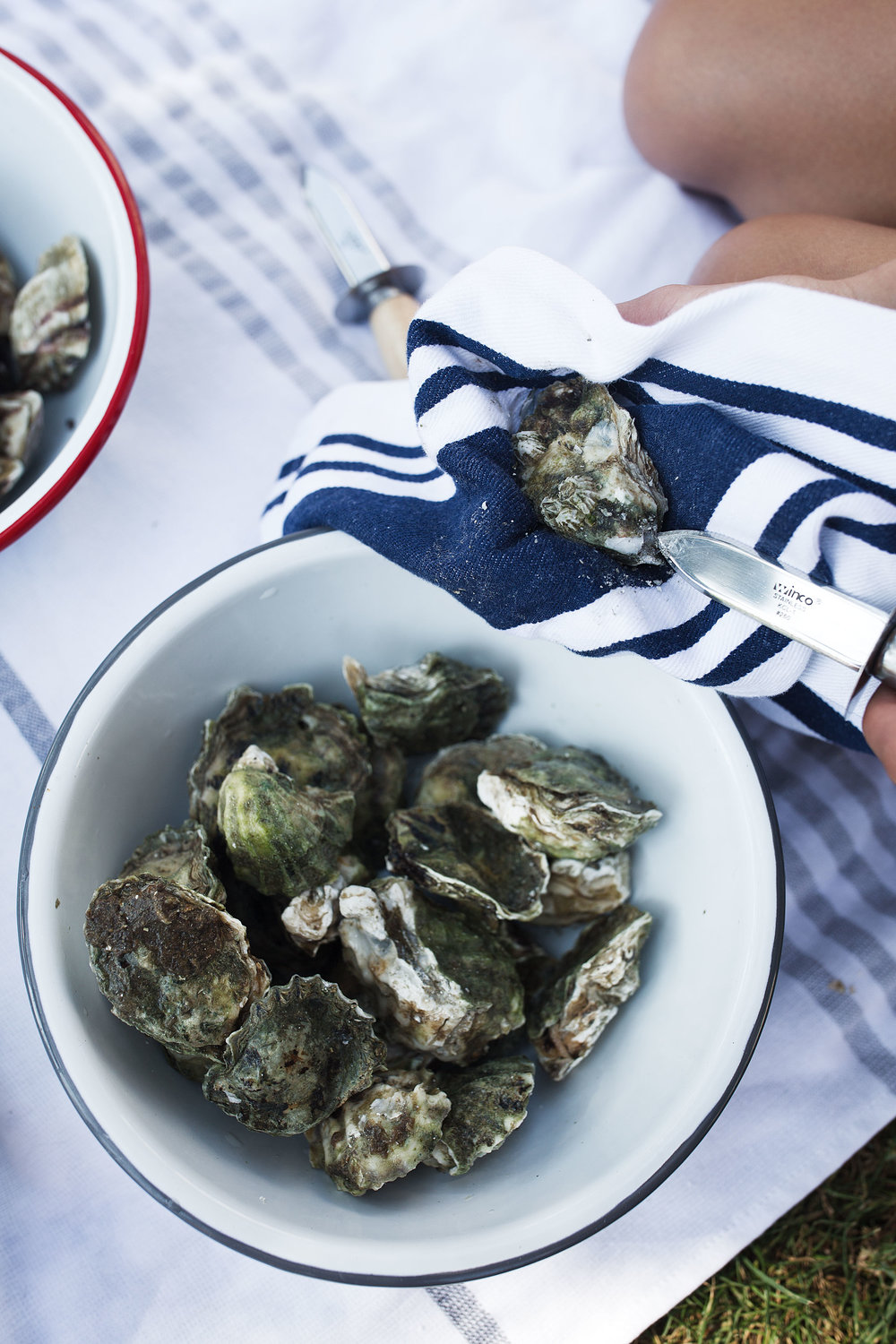
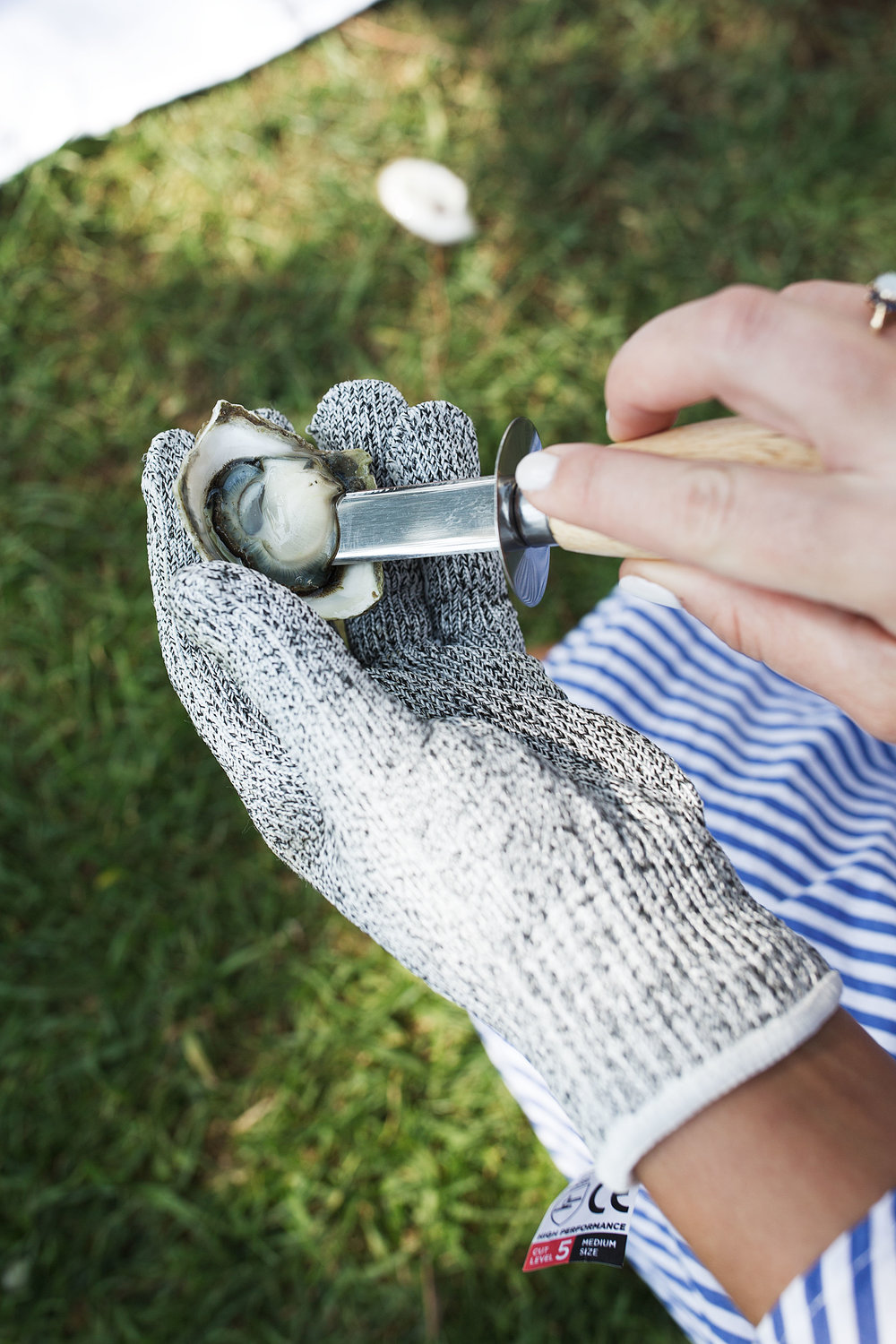
Slurp!
Plate the shucked oysters on a bed of crushed ice or rock salt inside a platter, tray or even a deep pizza or pie dish. This will keep the oysters level. If you aren’t serving them as you shuck them, it’s best to keep them on ice to keep them as fresh as possible.
I put a piece of plastic wrap over the ice to keep the melting ice from getting in the shell. Try to shuck them as close to the time of consuming them as you can.
Toppings
- Lemon or mignonette. While everyone has their favorite toppings I prefer to eat mine either with a simple little squeeze of lemon juice (serve with lemon wedges) or a small spoonful of mignonette, a red wine vinegar and minced shallot sauce with cracked black pepper. The acidity of the mignonette sauce compliments the oyster without covering up the unique flavor and texture of the oyster. When you are paying for a high quality oyster why disguise the flavor?
- Tabasco. My brother goes to school down in Alabama and he explained that oysters from that region, Gulf oysters, are typically meatier. Southerners will usually eat them on a saltine cracker with a little bit of cocktail sauce or hot sauce on top.
It’s always a good idea to serve oysters with an assortment of toppings ranging in acidity and flavor. Lemons, plain horseradish, cocktail sauce or mignonette are a good place to start. If you want to mix it up a bit check out these recipes for Earl Grey mignonette or apple cucumber mignonette – two different spins on the accompaniment.
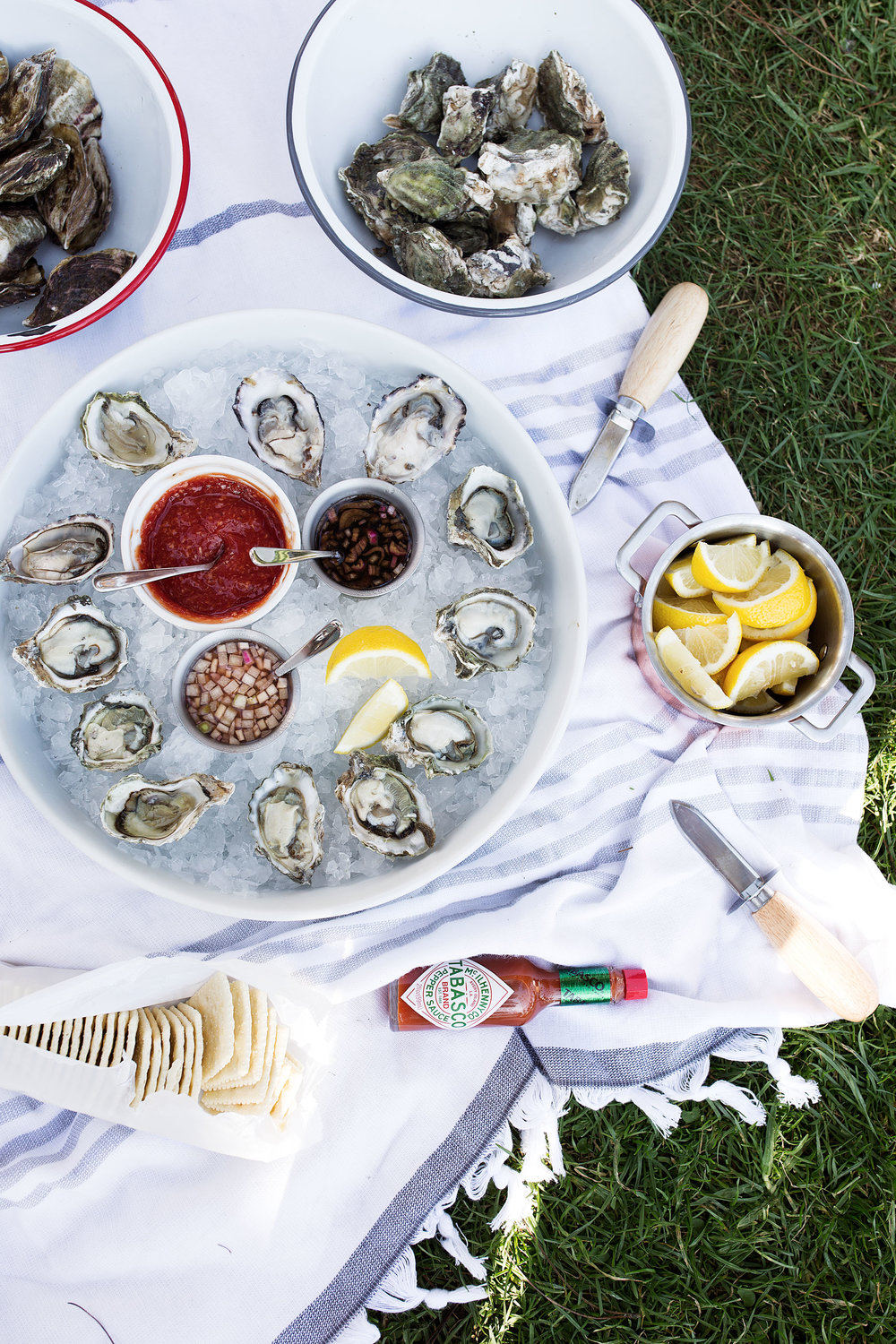
How to Eat Oysters
Unsure how to proceed with eating fresh oysters with grace?
As you stare down at the oyster-filled shell just proceed with confidence – I usually check to make sure the muscle on the bottom of the shell is completely cut then I add my toppings, tilt my head back and slurp the oyster. Give it a few little chews to thoroughly enjoy the flavors of the oyster, then swallow it.
Personal preference
Personally I tend towards oysters that are on the smaller to midsize and I like oysters that are either creamy or briny. While I am no oyster expert I love reading all about things, especially food that interests me. So, if you are intrigued by oysters as much as I am and want to learn more, a good place to start is with Rowan Jacobsen’s book “The Geography of Oysters”. No matter your preference, throwing your own oyster party isn’t as hard as it would seem. If you want to serve your oysters baked rather than raw, try this recipe for oysters Rockefeller here.
Just remember – practice safe shucking!
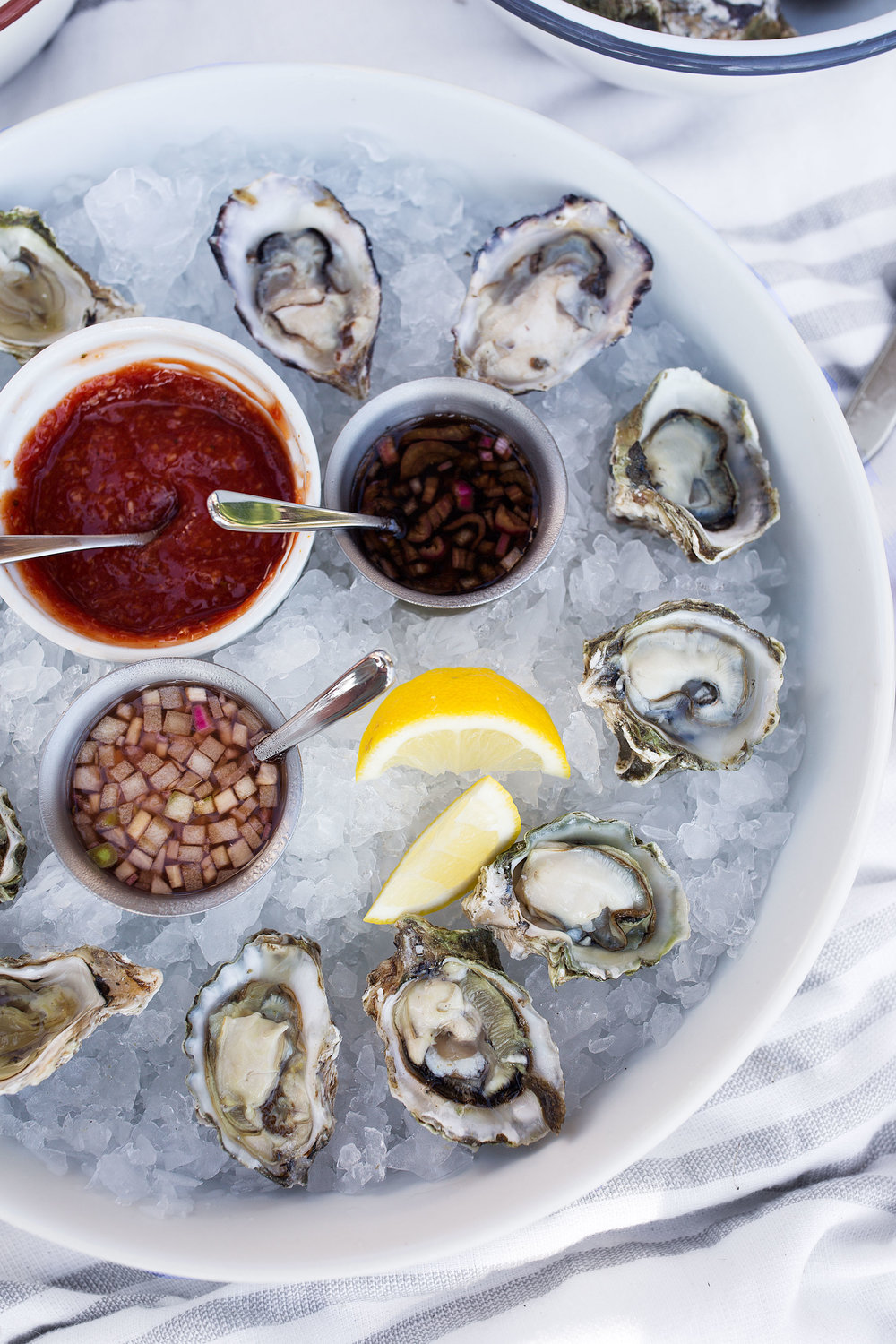
Sources:
A Geography of Oysters by Rowan Jacobsen; WSJ “How to Order Oysters“; Serious Eats “Knife Skills: How to Shuck an Oyster”; Lucky Peach “The New Rules of Oyster Eating”

)
)

My absolute favorite way to eat an oyster is a Pacific oyster cooked over a charcoal grill with a little garlic and butter or just some lemon juice. You can really enjoy the flavors this way!
charcoal grilled oysters are the way to go!! I had some really good ones at Cochon in New Orleans with homemade hot sauce – they were sooo good!